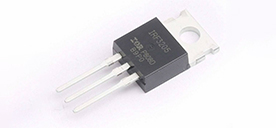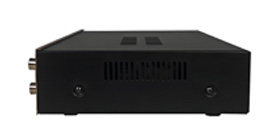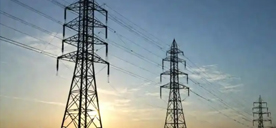Network Decoding: Revealing the Similarities and Differences between Broadband and WiFi
2024/4/18 10:09:23
Views:
1. Exploring the Essence of Broadband
Broadband, or Broadband, is defined in the field of electronic communications as a communication method that can transmit multiple frequency signals simultaneously. This technology allows us to transmit data over a relatively wide frequency range. The concept of broadband is relative. The wider the frequency range, the greater the bandwidth, and the data transmission capability is also enhanced. For example, in radio communications, only Morse code can be transmitted with a narrow bandwidth, but a wider bandwidth is required for the transmission of high-fidelity music. For TV signals, broadband means more channels can be received. In terms of data transmission, broadband technologies such as ADSL and fiber optic modems can provide higher transmission rates compared to telephone lines. In 2023, the number of fixed broadband access users will reach 636.31 million, of which 601.36 million will have access users with speeds of 100M and above, an increase of 46.66 million and 47.56 million over the previous year.
2. Interpret the characteristics of WiFi
WiFi, or "wireless LAN", is a wireless LAN technology based on the IEEE 802.11 standard. Wi-Fi Alliance manufacturers certify products using the "Wi-Fi" trademark, but not every product that complies with the IEEE 802.11 standard is Wi-Fi certified. Wi-Fi devices are widely used in personal computers, game consoles, smartphones, tablets, etc. to achieve network connections through radio waves. Networking can be done through wireless connections within the coverage area of WiFi. If an Internet line is connected, it is called a hotspot.
3. Comparison between Broadband and WiFi
1. Connection method: Broadband usually uses wired connections, such as telephone lines, fiber optics, or cable TV lines, while WiFi transmits data through radio waves without the need for physical lines.
2. Transmission medium: Broadband uses wired transmission to provide a stable connection, while WiFi uses wireless signal transmission and is suitable for mobile devices.
3. Usage scenarios: Broadband is suitable for large amounts of data transmission and stable network environments, such as offices and schools; WiFi is more suitable for places with many mobile devices such as homes and restaurants.
4. Stability: Broadband networks are relatively stable and are less affected by the environment, while WiFi signals may be greatly affected by walls, electronic equipment, etc.
5. Speed: Broadband is generally faster, especially when dealing with large data transfers, but WiFi can also be very fast if the signal is strong.
6. Cost and security: The cost of installing broadband is usually high, but the connection is relatively secure; the installation cost of WiFi is low, but the network security risk is high, and measures need to be taken to enhance security.
These comparative analyzes highlight the characteristics and applicability of broadband and WiFi in different scenarios, providing users with a clearer basis for selection.
Broadband, or Broadband, is defined in the field of electronic communications as a communication method that can transmit multiple frequency signals simultaneously. This technology allows us to transmit data over a relatively wide frequency range. The concept of broadband is relative. The wider the frequency range, the greater the bandwidth, and the data transmission capability is also enhanced. For example, in radio communications, only Morse code can be transmitted with a narrow bandwidth, but a wider bandwidth is required for the transmission of high-fidelity music. For TV signals, broadband means more channels can be received. In terms of data transmission, broadband technologies such as ADSL and fiber optic modems can provide higher transmission rates compared to telephone lines. In 2023, the number of fixed broadband access users will reach 636.31 million, of which 601.36 million will have access users with speeds of 100M and above, an increase of 46.66 million and 47.56 million over the previous year.
2. Interpret the characteristics of WiFi
WiFi, or "wireless LAN", is a wireless LAN technology based on the IEEE 802.11 standard. Wi-Fi Alliance manufacturers certify products using the "Wi-Fi" trademark, but not every product that complies with the IEEE 802.11 standard is Wi-Fi certified. Wi-Fi devices are widely used in personal computers, game consoles, smartphones, tablets, etc. to achieve network connections through radio waves. Networking can be done through wireless connections within the coverage area of WiFi. If an Internet line is connected, it is called a hotspot.
3. Comparison between Broadband and WiFi
1. Connection method: Broadband usually uses wired connections, such as telephone lines, fiber optics, or cable TV lines, while WiFi transmits data through radio waves without the need for physical lines.
2. Transmission medium: Broadband uses wired transmission to provide a stable connection, while WiFi uses wireless signal transmission and is suitable for mobile devices.
3. Usage scenarios: Broadband is suitable for large amounts of data transmission and stable network environments, such as offices and schools; WiFi is more suitable for places with many mobile devices such as homes and restaurants.
4. Stability: Broadband networks are relatively stable and are less affected by the environment, while WiFi signals may be greatly affected by walls, electronic equipment, etc.
5. Speed: Broadband is generally faster, especially when dealing with large data transfers, but WiFi can also be very fast if the signal is strong.
6. Cost and security: The cost of installing broadband is usually high, but the connection is relatively secure; the installation cost of WiFi is low, but the network security risk is high, and measures need to be taken to enhance security.
These comparative analyzes highlight the characteristics and applicability of broadband and WiFi in different scenarios, providing users with a clearer basis for selection.
Related Information
-
-
Phone
+86 135 3401 3447 -
Whatsapp





